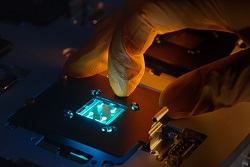Science learns to measure odours
Scientists have long wanted to predict or identify odours based on their molecular structure. Commenting on odours, the American scientist and inventor Alexander Graham Bell said a century ago, 'until you can measure their likenesses and differences you can have no science of odour'. Against this backdrop, the EU-funded ODORSPACE (Predicting odor perception from odorant structure and neural activity in the olfactory system) took up the challenge. In early work on this topic, scientists had investigated how the sense of smell or olfaction was linked to neural activity. They had looked at linking carbon chain length to neural activity, noting however the olfactory system did not evolve to decode carbon chain length. Instead, they found that the sense of smell was based on olfactory perception and not the detection of carbon chain length. Based on this premise, the project team developed a new approach to smell, generating a metric that can be estimated for any molecule, one that can predict perception and neural activity even across species. This helped identify how similar or dissimilar odours are to each other, enabling systematic probing of the neurobiology of olfaction. Beyond developing the metric, the research team also shed light on the role of sniffing behaviour in formation of the olfactory percept. It found that the sensory-motor feedback loop is precisely controlled, yet very robust in its neural organisation, proving that sniffing would remain intact following severe brain injury. Armed with this new knowledge, the project conceived and built prototype devices that enable paralysed individuals to control external equipment like electric wheelchairs and computers with their nose. The new technology improved the lives of test subjects considerably, paving the way for a very promising field in helping those who are paraplegic or quadriplegic. The project was therefore successful on two fronts, creating a viable metric for the sense of smell and developing life-changing technology for persons with severe physical disabilities.







